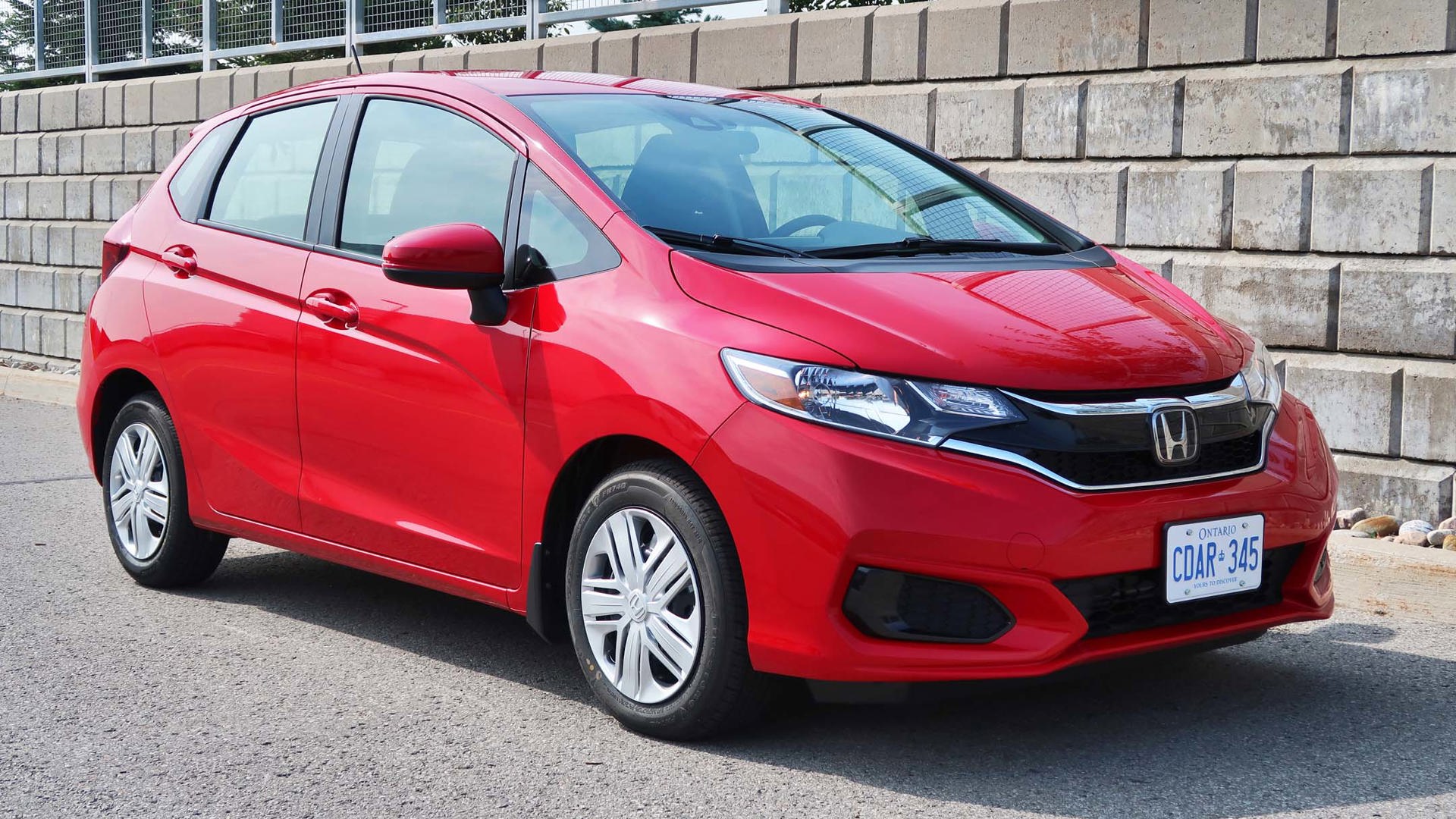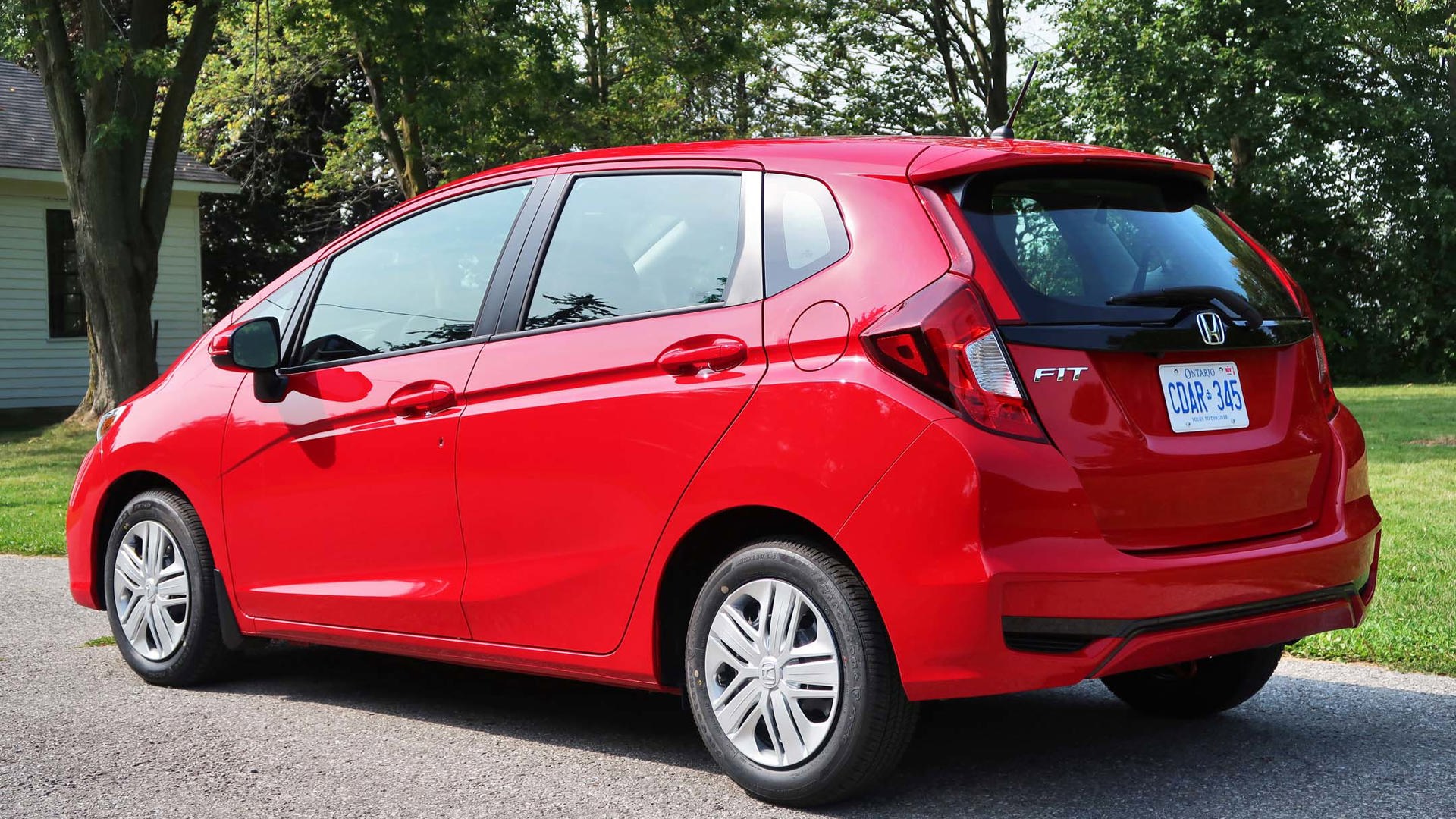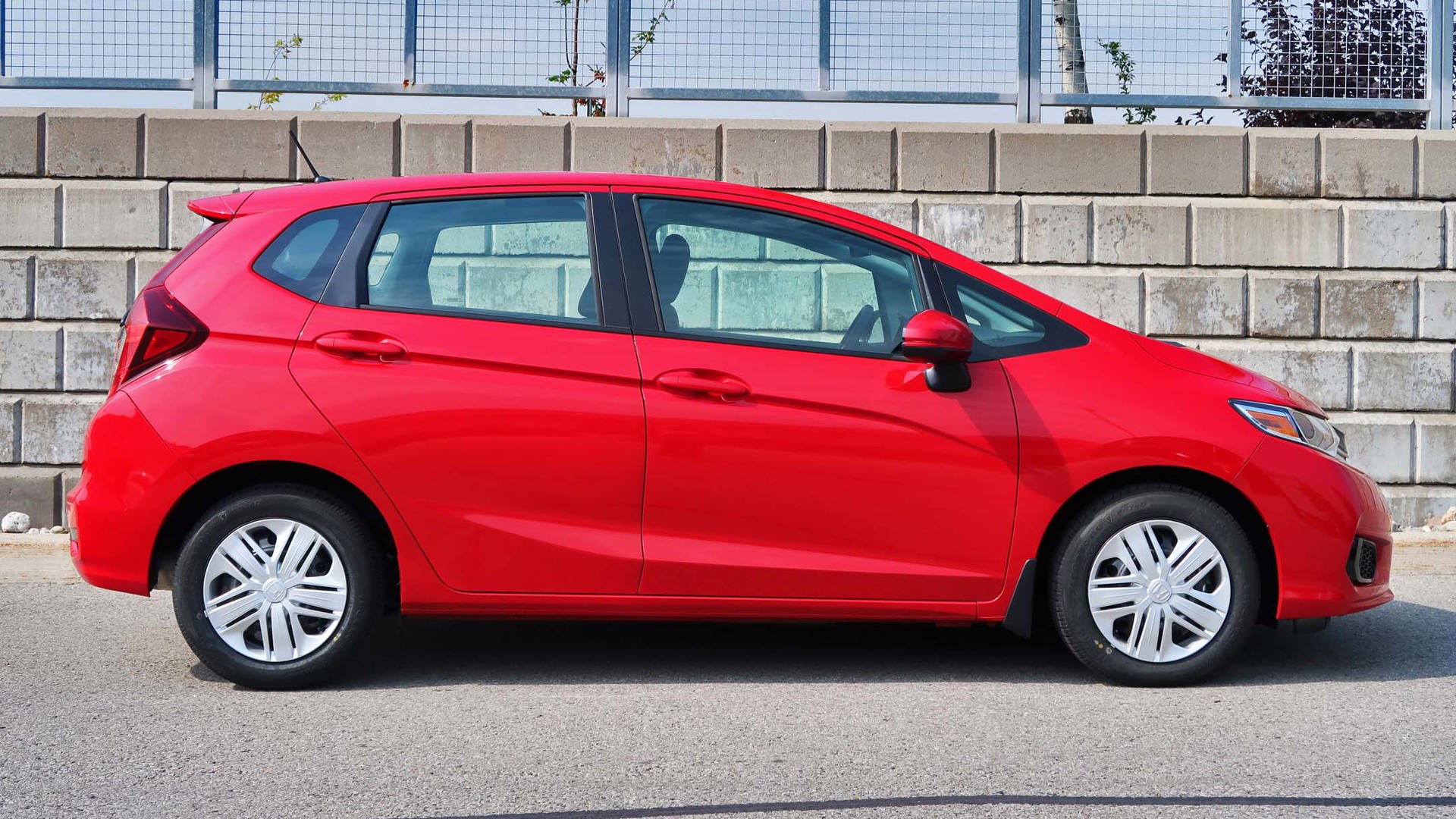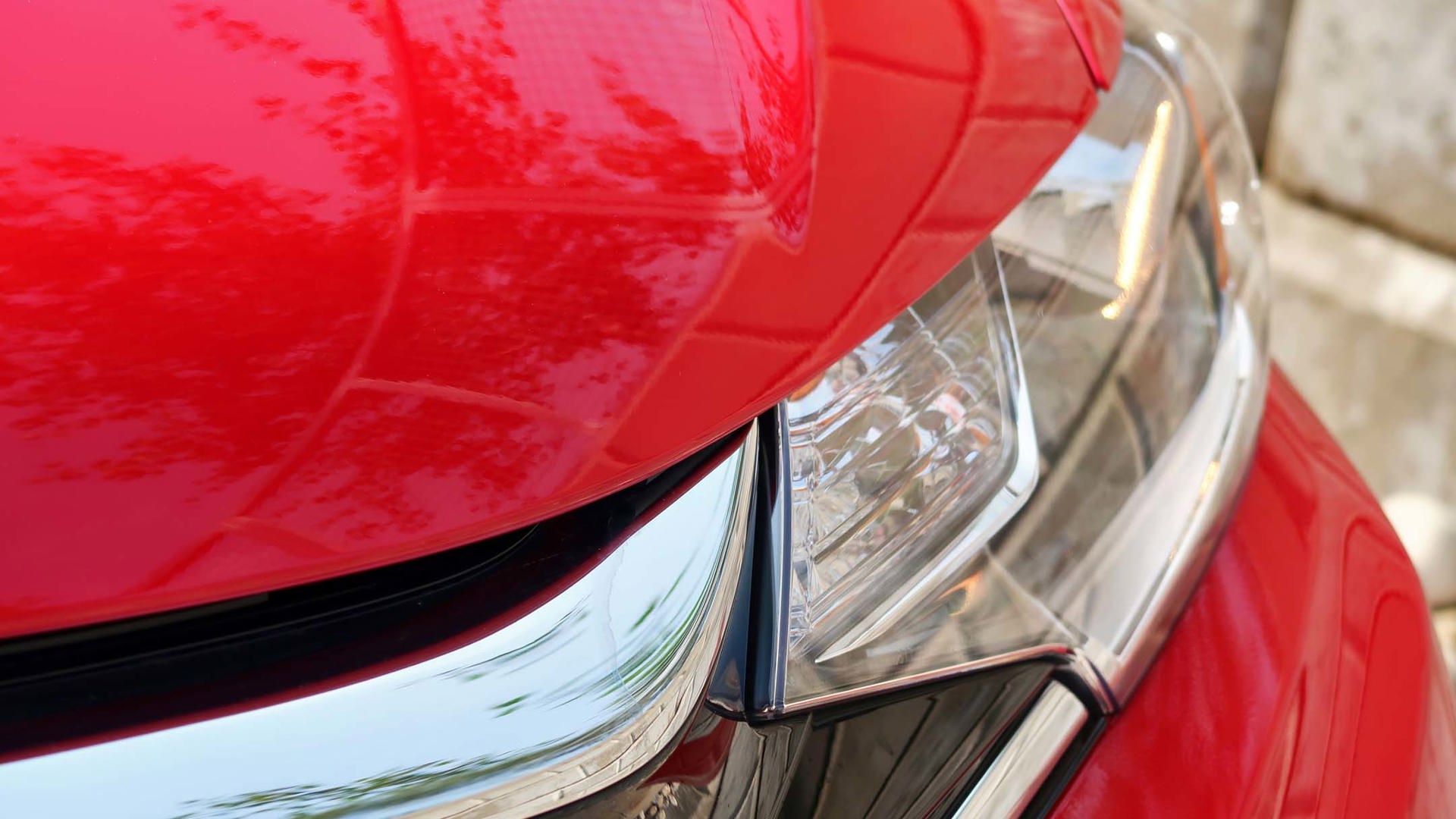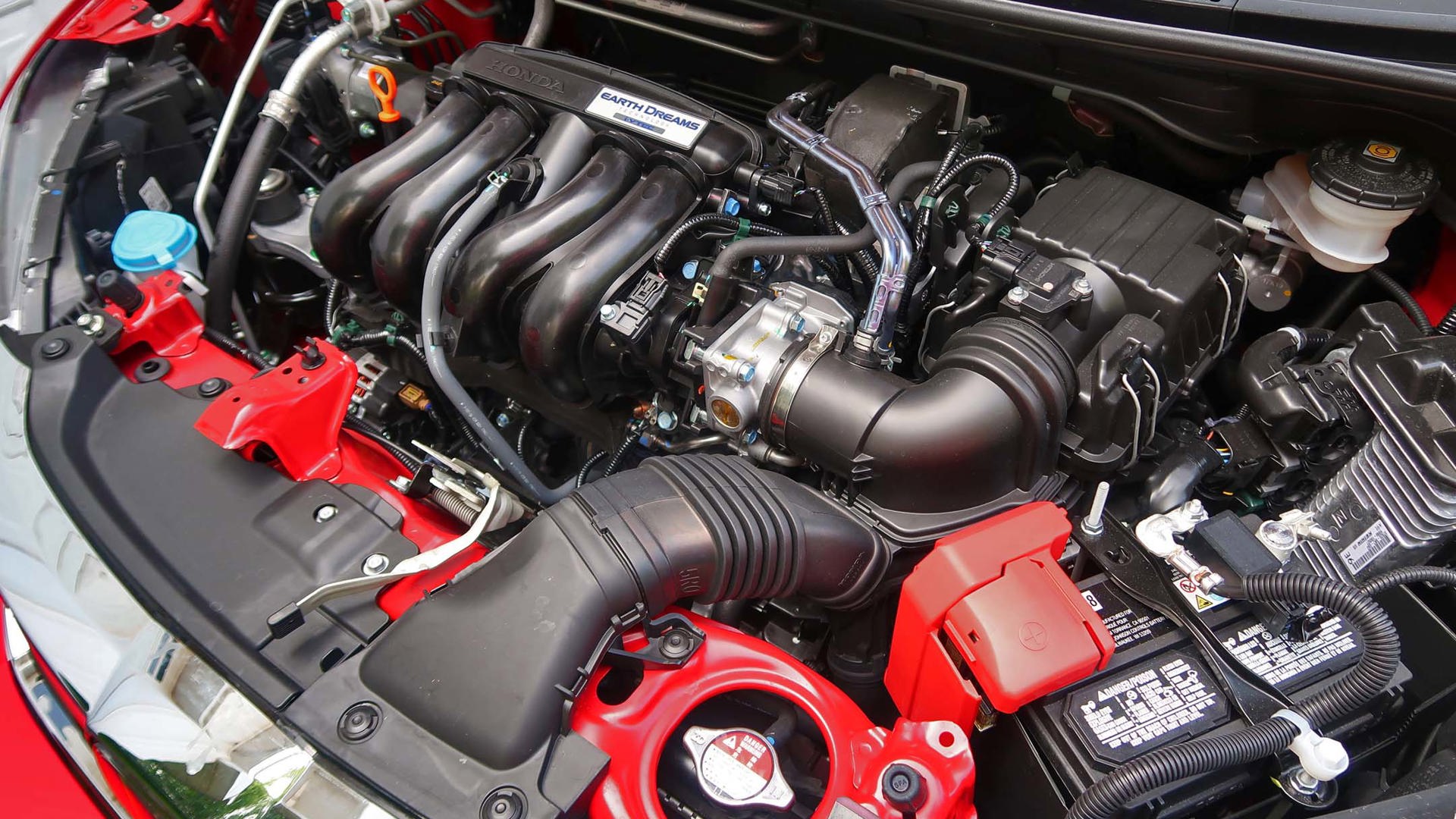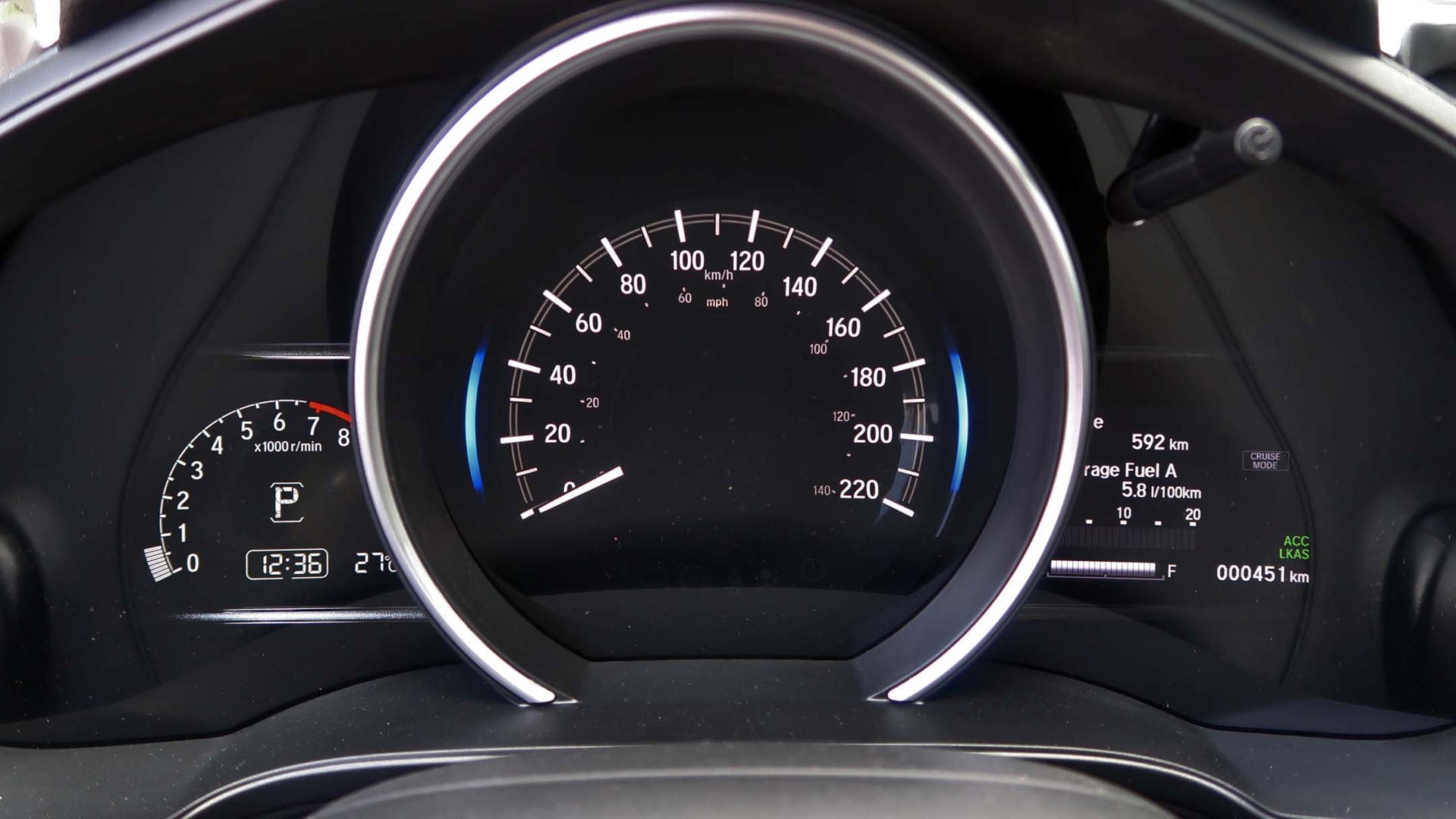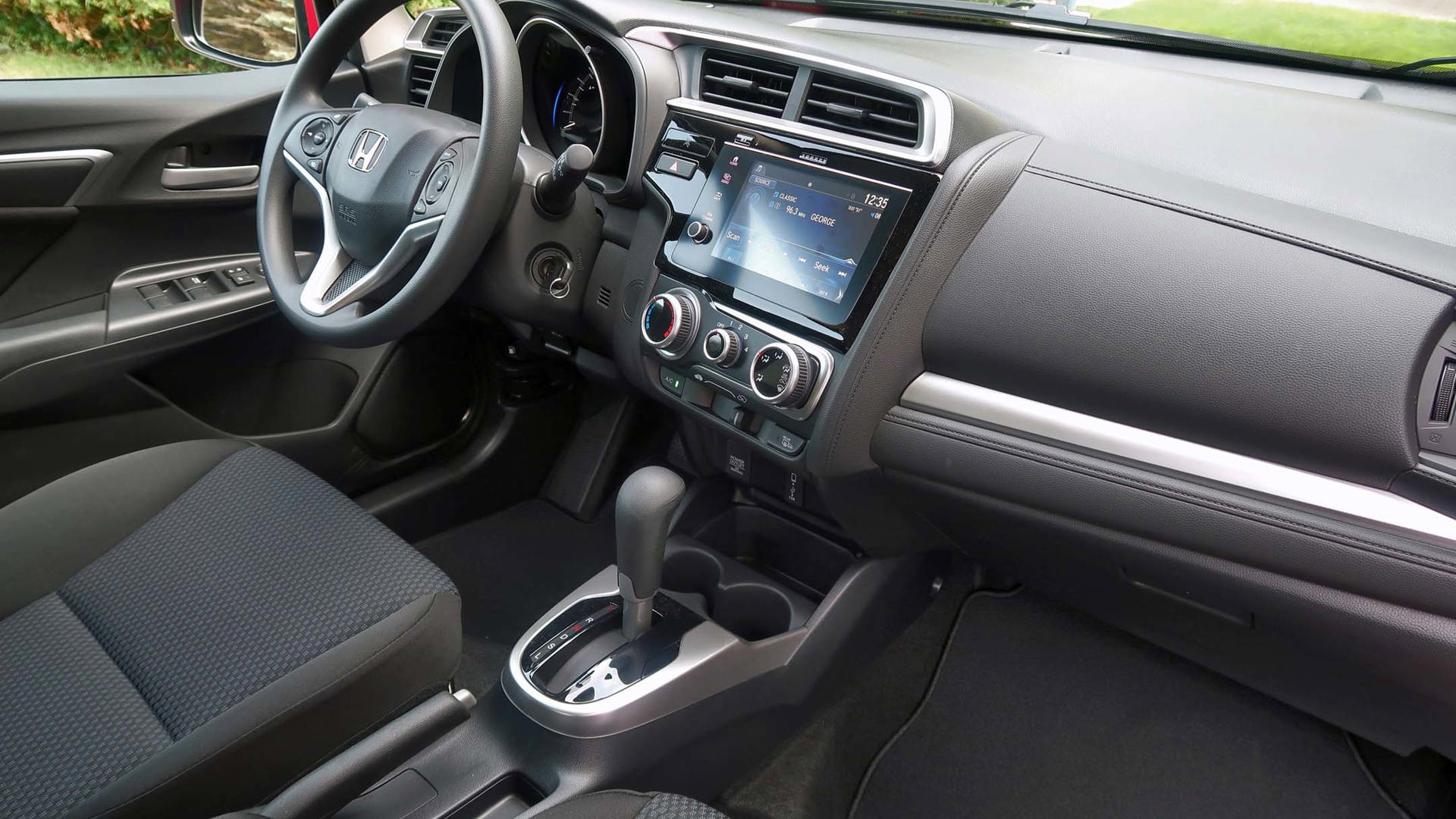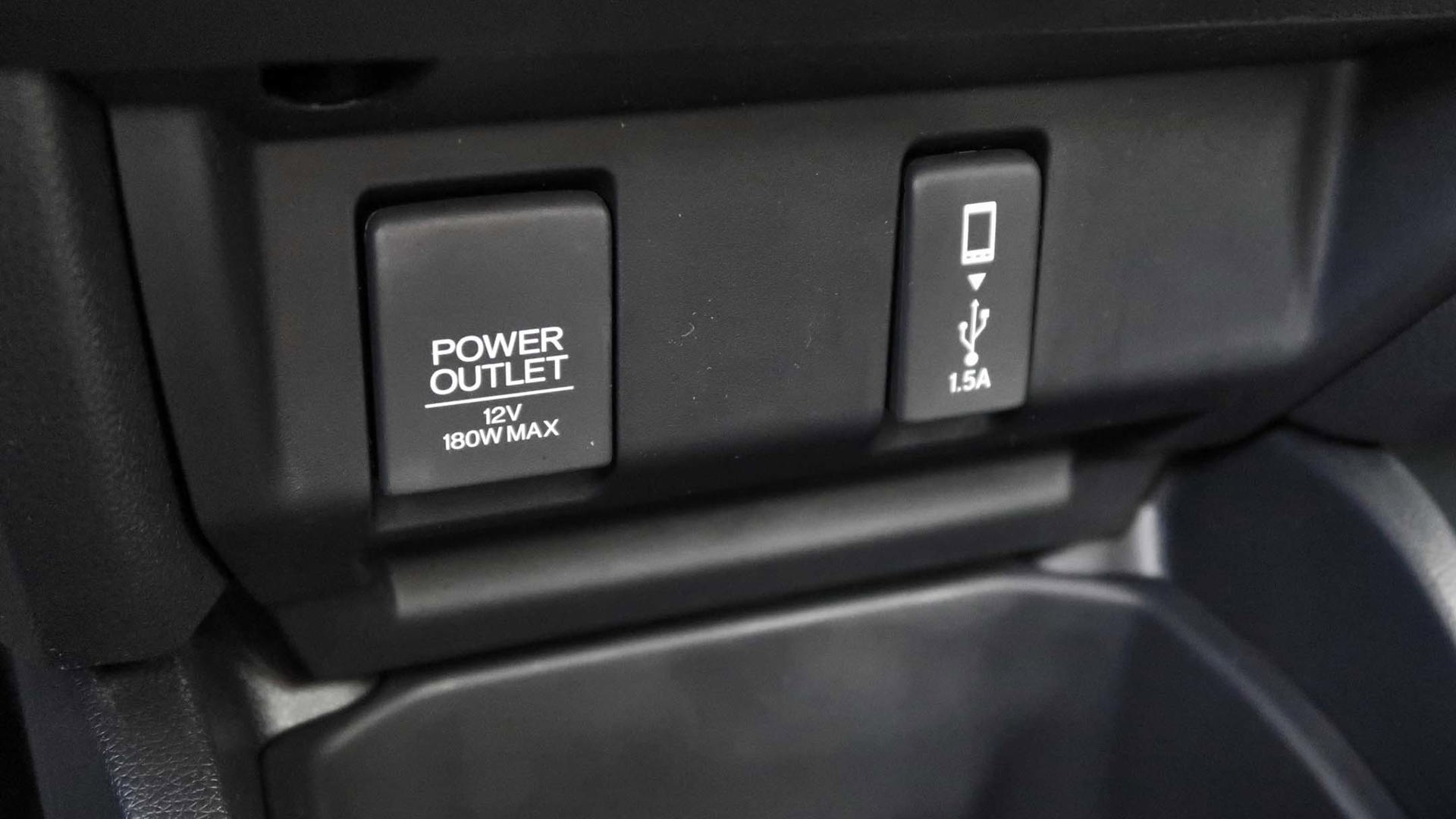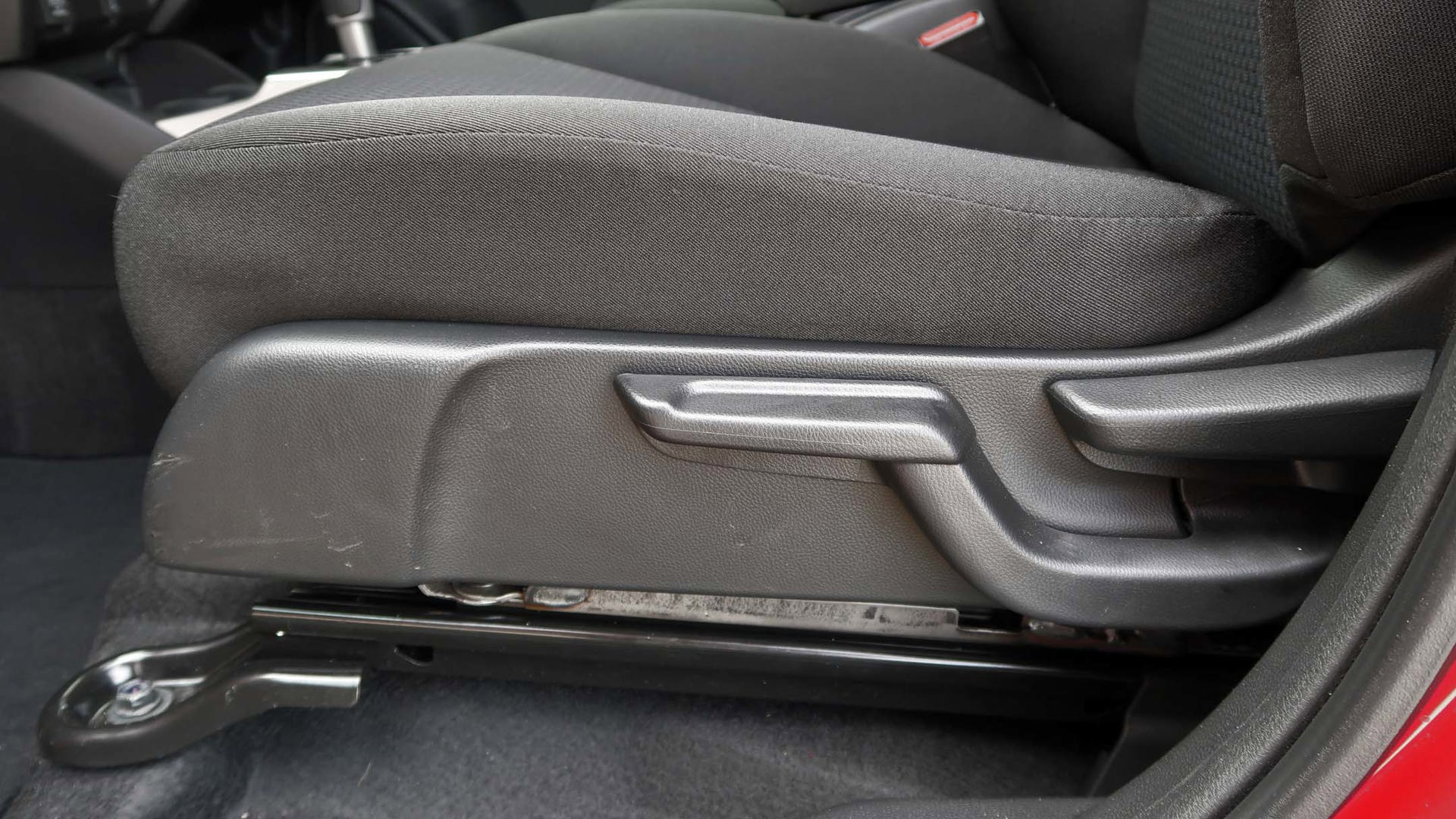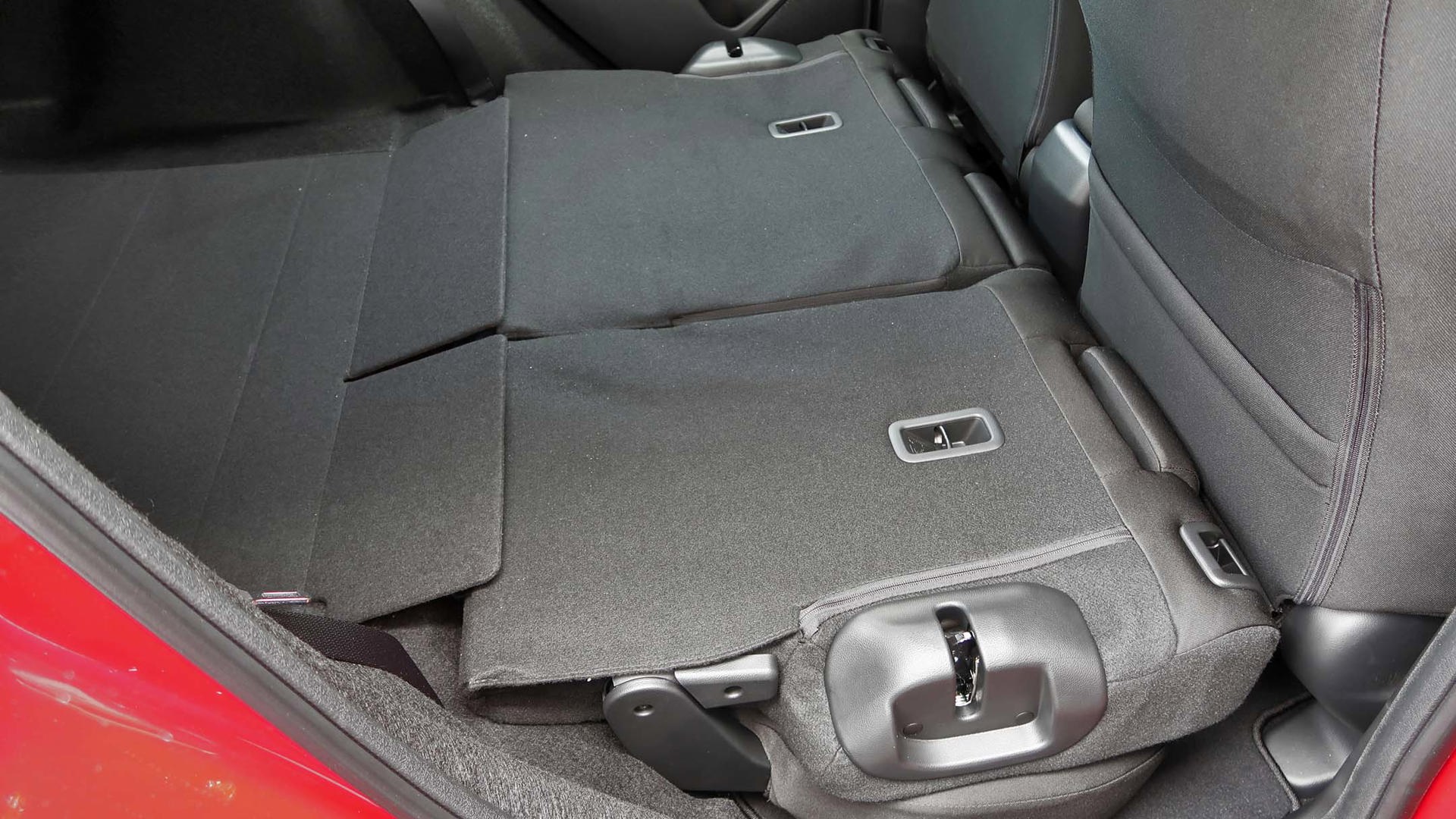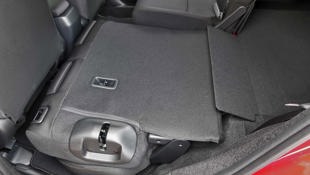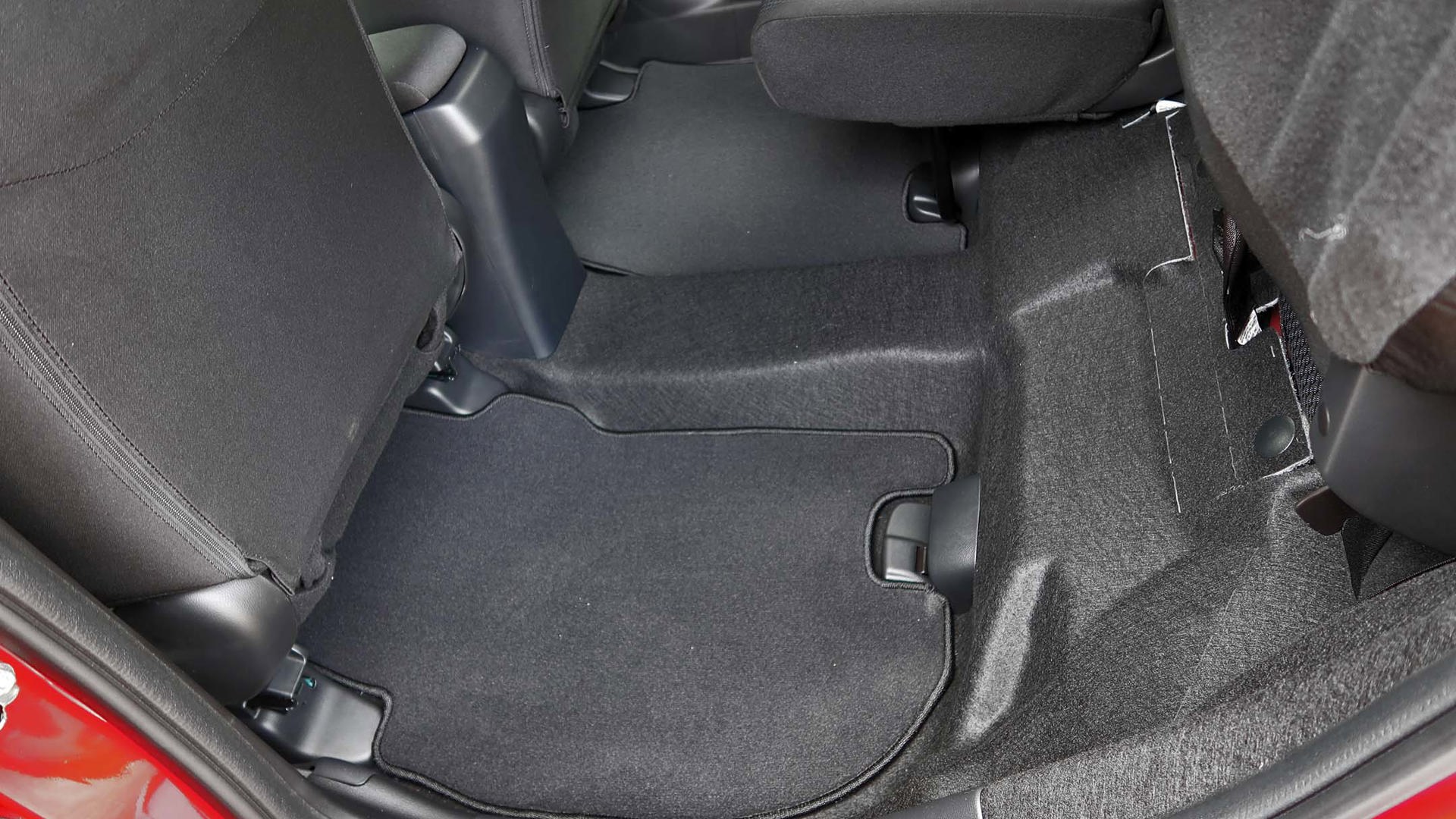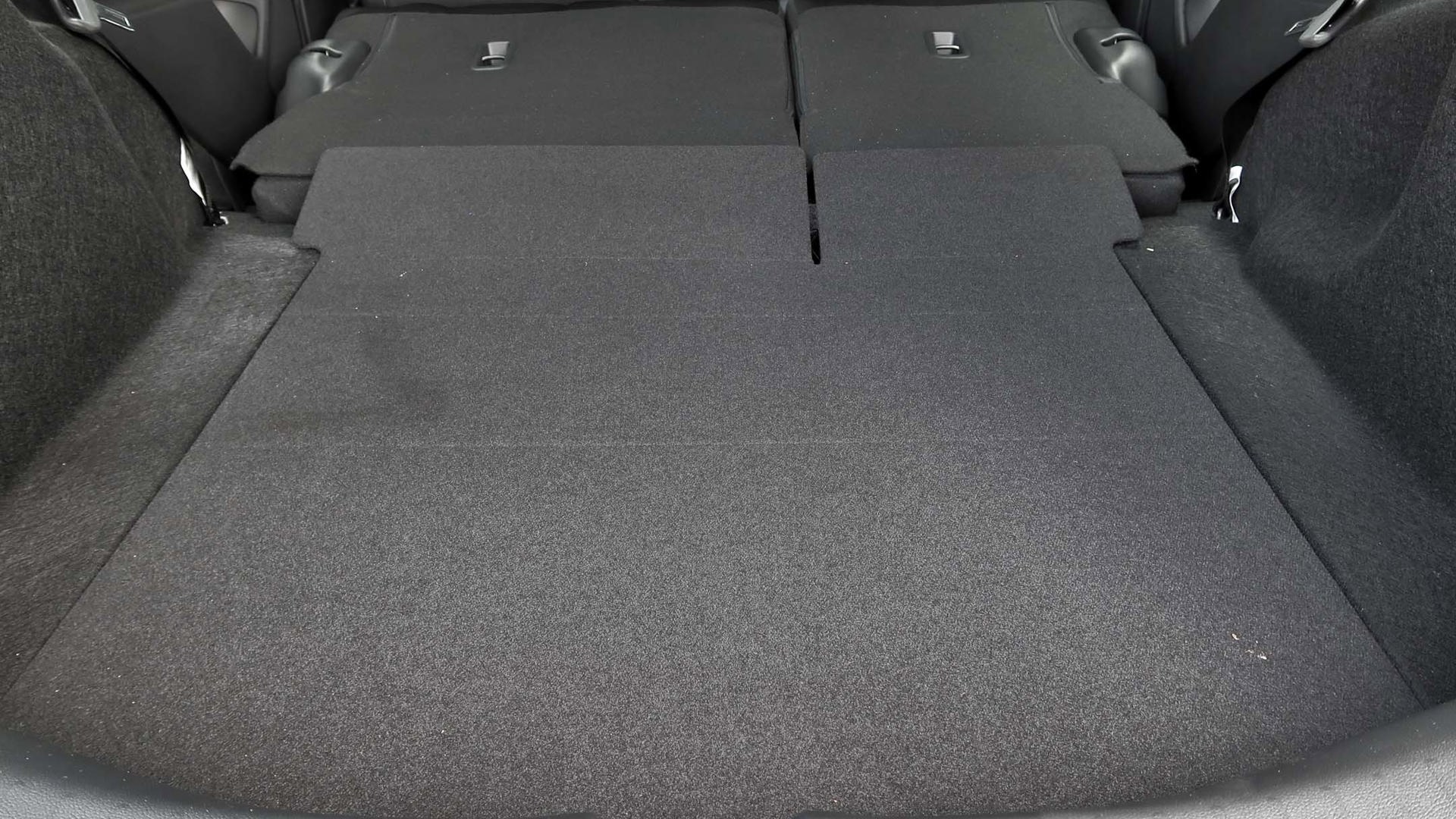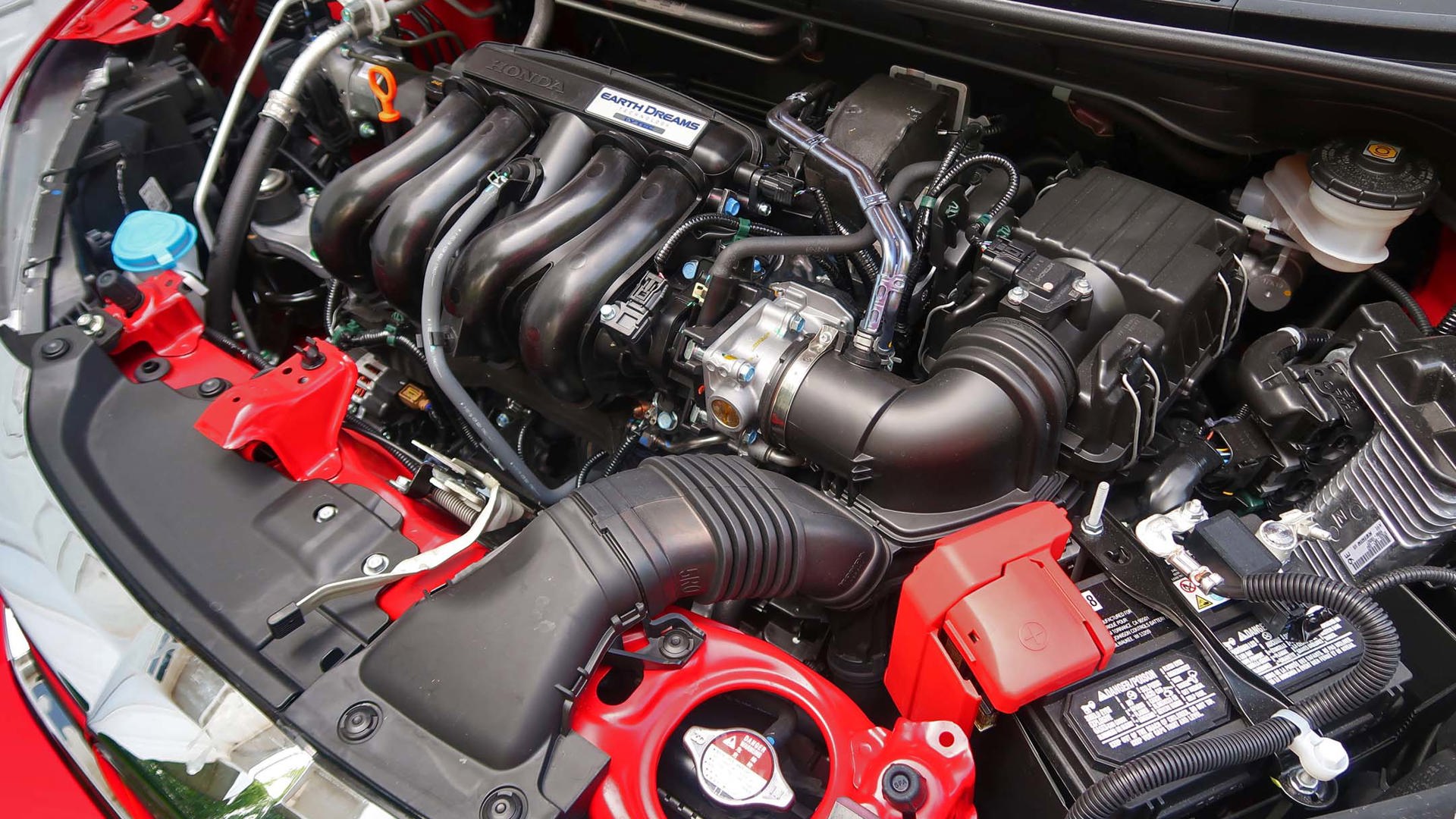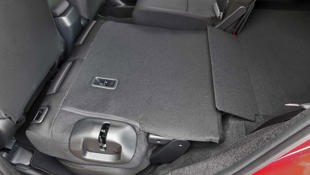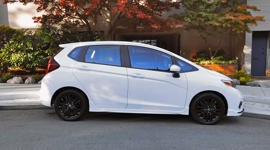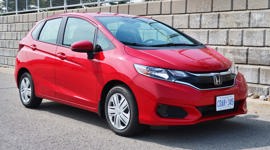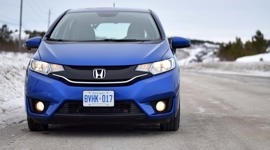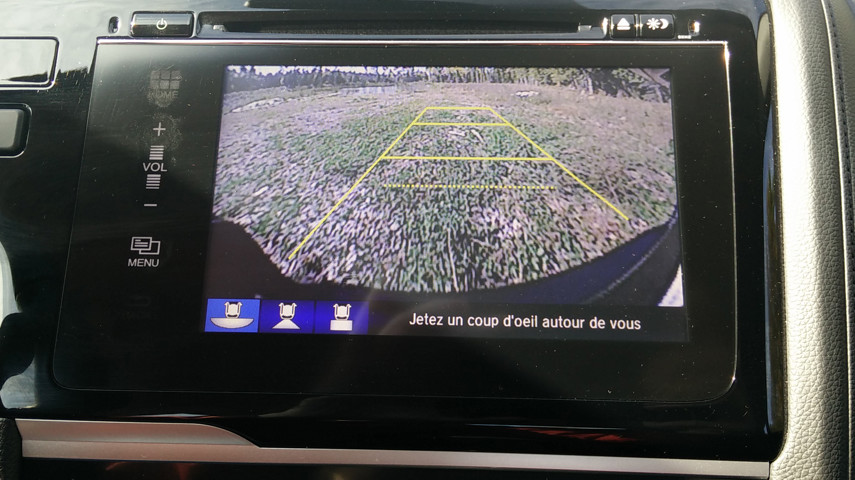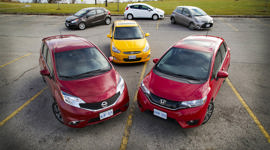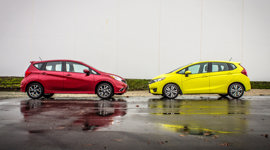Vehicle Type
On all aspects of space, functionality, flexibility, and storage, the Fit seems to have impressed many owners.
Subcompact hatchback
History/Description
The latest version of the Honda Fit hit the road in 2014 for the 2015 model year with increased power, new looks, new features, and sportier driving dynamics. This tall hatchback is Honda’s entry-level car, and a machine that offers top-notch space, flexibility, and fuel efficiency in a compact package.
Packing on-board space that nearly defies its small size, the Fit boasted plenty of room for cargo and pets, and gave owners a set of trick rear seats that flip up or down to accommodate anything from passengers to shopping to pets to bicycles.
Many shoppers have found the Fit a viable alternative to a larger, thirstier crossover SUV. Combined fuel efficiency is rated around 6.4 L/100 km.
Those upgrading from a previous-generation model will appreciate the remarkable increase in passenger volume and rear-seat legroom.
Look for navigation, Bluetooth, back-up camera, sunroof, push-button start, heated leather, full steering-wheel-mounted controls, and more. Automatic climate control and a large touchscreen central command interface were also available.
Trim grades start with the DX and LX, with the EX and EX-L Navi coming in at the top of the lineup.
Engines
All models from this generation run a 1.5-litre, 130 horsepower four-cylinder engine that drives the front wheels through the driver’s choice of a six-speed manual or a continuously variable transmission (CVT), which is the automatic transmission option.
What Owners Like
On all aspects of space, functionality, flexibility, and storage, the Fit seems to have impressed many owners. Numerous high-tech touches add some modern flair to the cabin, and most owners say the high-end feature content is easy to use, and becomes intuitive before long. The 1.5-litre engine satisfies most owners concerned primarily with fuel mileage.
What Owners Dislike
Complaints include higher-than-expected levels of wind and road noise at speed, a ride that can become harsh and noisy on rougher surfaces, and the wish for a few more horsepower – according to sportier drivers. Some owners also note that headlight performance after dark is good, not great. Finally, numerous owners have reported dissatisfaction with the comfort of the Fit’s seats – so be sure to determine how they feel for yourself on a test drive.
The Test Drive
Visual Checks
When approaching a used Fit for a test drive, think “fit, finish, and functionality.”
Start by examining the paint, trim, and wheels for signs of chipping, peeling, scuffing, or damage; calling excessive wear into your pricing negotiations. Some owners have reported less-than-expected durability from the paint on their Fit as it ages, though many variables are at play.
Further, check for signs of rust, or repaired rust, around the rear wheel wells where the steel body meets the plastic bumper.
Be sure the tailgate stays open on its own, confirming the struts that lift and support the tailgate aren’t worn out. Applying a slight downwards push on the tailgate, confirm that the gas struts are able to keep it open. If that’s not the case, new liftgate struts are likely needed.
Finally, be sure to flip and fold the rear seats through all the configurations, confirming that the rear seating system operates as expected. If any of the latches, releases, or springs in the seating mechanisms are in need of repair, now’s the time to find out.
Diagnostic Scan
We’ll start with the most serious-looking potential issue for shoppers to be aware of. Some owners have reported the simultaneous illumination of numerous warning lights in the instrument cluster, often alongside degraded performance, or engagement of the engine’s “limp mode” (which automatically decreases power output when a serious problem is detected with the engine).
Whether or not you detect issues like these on your test drive, be certain to have a Honda technician perform a diagnostic scan of the Fit’s engine computer. This can reveal stored “trouble codes” that can indicate possible hidden problems. In this case, those problems may be related to bad plugs, ignition coil packs, a bad high-pressure fuel pump, or some combination thereof.
Note the importance of checking all maintenance records here: if a warranty repair is indeed required, you will likely need to show all service records indicating that no maintenance has been skipped or stretched. If the past owner didn’t properly maintain the Fit you’re considering, its warranty could be compromised. Buyer beware.
Finally, if you experience issues like this later on during ownership, be sure to have a Honda dealer inspect the vehicle and document their findings, which can help with future warranty claims, if applicable.
Some owners have had parts replaced under warranty to correct this problem, though out-of-warranty repairs can be expensive. Though this issue isn’t reported with significant frequency against sales volume to be considered widespread, shoppers should still be on the lookout as the repair cost can be serious. Better safe than sorry.
Water Leaks
It looks like potential water-leakage issues from past Honda Fit generations may still be a concern for this latest model. Some owners of this generation of Honda Fit have reported water leaks of various shapes and sizes, some of which may result in wet carpeting in the cabin.
Inspect all carpeting carefully for signs of mould, moisture, or water staining. Here’s some more reading. Blocked sunroof drain tubes, or damaged or missing rubber gutters around the inner door latch mechanisms are possible culprits, if a water leak is detected.
Another possible culprit is has to do with this recall, which applied to certain models from this generation. Dealers replaced an internal part of the Fit’s door handles, which may be prone to rust. In some cases, improper replacement procedures could compromise a seal/gasket assembly in the door handle, which may allow water to flow through the inner part of the door and into the cabin from the rocker-panel area.
CVT Transmission
If you’ll go the CVT route for your used Fit, take steps to ensure that the transmission isn’t overdue for any servicr or inspection. Check the owner’s manual maintenance schedule against all service records to confirm that the transmission has been cared for as outlined by that schedule, and ideally, that all work has been performed by a Honda technician in a dealer setting. If any maintenance has been skipped or stretched, the remaining warranty on the transmission is likely void, and the transmission may experience accelerated wear and other problems.
Buying a used Fit with a transmission that hasn’t been properly cared for is not advised – partially because numerous owner-reported problems online seem to stem from such neglect. Because of the specific equipment and fluid required to service this type of transmission, having all work performed in a dealer setting is best. Here’s some more information.
Further, note that software updates may be available to improve the smoothness and operation of the transmission in your used Fit. These are dealer-installed optimizations to the software that controls the mechanical parts of the transmission. Ask your dealer service advisor to see if any software updates might be available for the unit you’re considering.
Starter/Ignition
Though reported with relative rarity against overall sales volumes, some owners have reported difficulty (or failure) starting their Fit. Stop and re-start the engine several times on your test drive, while being on the lookout for any difficulty restarting the engine quickly. If the Fit you’re test-driving struggles to start its engine in a timely fashion (or fails to start the engine at all), you’ll want to have a technician investigate.
Likely culprits include a bad starter motor (relatively expensive), or a problem with the push-button start switch, and/or remote keyfob. The latter may require parts or a software reflash by a dealer to remedy. Here’s some more reading.
Weak Battery
Given numerous owner reports of dead and dying batteries, it seems fairly safe to say that the factory-supplied battery in this generation of Honda Fit offered a less-than-stellar lifespan. Many variables are at play – including driving habits. Models used infrequently and mainly for shorter drives are typically most susceptible.
A weak or dying battery can cause numerous problems across various vehicle systems, and may result in a no-start situation. Some owners say they’ve had to replace the factory battery early, sometimes more than once. For any used Fit, and especially one that won’t be used regularly for longer drives, consider having a battery and charging system test carried out, and replacing the battery if it doesn’t pass the test with flying colours. Some owners have even replaced the factory battery with a “larger” battery for a longer lifespan.
Here’s an excellent candidate for a battery trickle-charger. Hook the trickle charger up to the battery to keep things topped off when you won’t be driving the car for more than a few days to help fend off battery-related issues.
Recalls
Here’s a list of recalls. Check to see if any of them apply to the unit you’re considering by looking up the VIN on the Honda website. Ensure all recall work is completed before you purchase.
Verdict
A few possible issues dull the appeal of this generation of Honda Fit slightly – though most of these can be easily detected on a test drive. Protect yourself from one of Fit’s potentially most expensive repairs by having a diagnostic scan performed, to reveal potential signs of engine trouble caused by bad fuel system or ignition parts. An extended powertrain warranty may be a good idea as well. Note that most owners report few if any issues – though it always pays to be careful. For best results, approach every used Fit assuming it needs attention to the trouble spots above, until you have proof to the contrary.
Safety Ratings
IIHS: Top Safety Pick (2015)
NHTSA: 5/5 Stars (2015)
